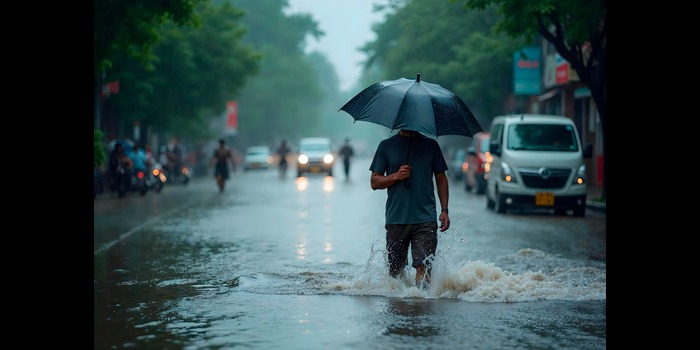Kerala Rains Force Closure of Schools, Colleges
Share

As a result of the continuous torrential rains that caused schools and colleges all across the state to close, the India Meteorological Department (IMD) issued orange and yellow warnings on July 17, 2025 in many regions of Kerala. In reaction to severe weather, the regional governments have enacted this preventative measure, which has caused waterlogging, leaking drains, and a potential for landslides in mountainous areas. Among the locations where officially ordered school closures have occurred are Pathanamthitta, Kottayam, Idukki, Ernakulam, Alappuzha, and many parts of Kozhikode and Thiruvananthapuram. Based on recent IMD data and local disaster management groups, the state government now enables municipal governments to make decisions. Stating that student safety is their first concern, the authorities have taken actions to avoid cases of children being left behind or abused either at school or on the streets. The IMD forecasts more rain in the days ahead as the southwest monsoon winds gain strength over the Kerala coastline. While the yellow warning signals the probability of notable rainfall of up to 11 cm over a 24-hour period, the orange warning points toward very high rainfall between 11 and 20 cm. Vulnerable areas are under risk of flash floods and landslides given the relentless rain that started in July. Because of Wayanad and Idukki’s rough topography, disaster response teams are permanently on high alert. District collectors have advised residents in areas where landslides are probable to relocate for the time being and avoid superfluous travel. As a safety precaution especially in low-lying areas where floods are expected if the rain keeps at its present intensity, relief camps have been set up. Fallen trees and small landslides have destroyed electricity and roads in a few portions of Kottayam and Ernakulam. Some local governments have asked the Kerala State Electricity Board (KSEB) and Public Works Department (PWD) to be quick with maintenance demands so as not to interrupt essential services. Even if it is late, most communities still provide public transportation. State-run bus lines have been diverted or temporarily closed, particularly in flood-prone or hilly areas. Though the railway management keeps a tight watch over flood-prone locations close to the tracks, southern train services run virtually without interruption. Parents all around the state who give their children’s safety top priority have welcomed the government’s decision to close schools. Many schools have temporarily switched to online learning in preparation for forthcoming exams, especially for older high school students. Authorities in some rural areas lacking dependable internet connection continue to work on the digital divide, especially during weather-related interruptions. Every choice, according to Kerala Education Minister V. Sivankutty, has been produced in coordination with meteorology experts and municipal officials. Schools and universities will not reopen until it is safe to do so, he said. “We encourage all parents, kids, and school authorities to abide by official updates and refrain from believing or spreading rumors,” he stated. “The state disaster management agency has also enabled emergency helplines and asked local governments to quickly assess the degree of damage to public infrastructure, roads, and schools. Fishermen have been instructed to remain off the water in view of severe weather; port authorities have been asked to hoist warning flags as necessary. The torrential monsoon rain draws attention to how climate change is making Kerala more susceptible to strong storms. Once more, experts, conservationists, and urban planners have underlined how critical better drainage systems, sustainable development in sensitive areas, and enhanced readiness for recurring monsoon disruptions are. The Kerala government has cautioned everyone to be careful, adhere to official instructions, and stay indoors unless absolutely necessary. Still the first concern is minimizing damage and saving lives even during the height of monsoon season, as well as keeping basic services and education as much as feasible.








